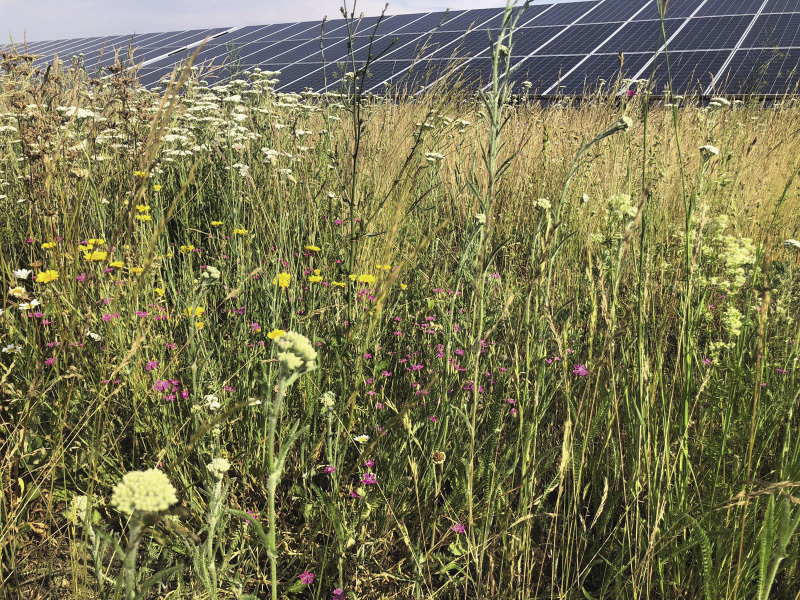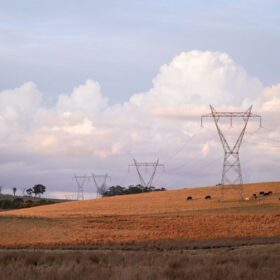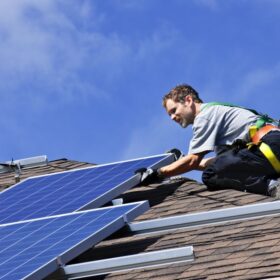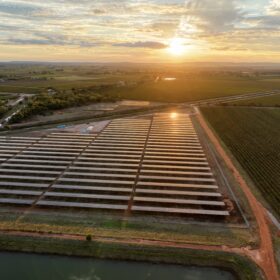From pv magazine 09/2021
SFDR and NFDR, EU taxonomy, Green New Deal, COP15 and COP26, Equator Principles, TCFD and TNFD – keeping track of the whirlwind of ecological sustainability regulations and recommendations can be a real challenge. One thing is clear, though – the application of the do-no-significant-harm principle of the EU taxonomy means that, while solar PV significantly contributes to at least three of its six environmental objectives, it still needs to prove no significant harm to the other three. Given the scale and demand for land resources, a particular focus for PV is likely to be the protection and restoration of biodiversity and ecosystems.
Since publishing the “PV for Future” article in the January 2021 edition of pv magazine, which argued that putting ecological sustainability at the heart of PV project planning and operation should become the new industry standard, the situation has already changed.
Given that the first EU Taxonomy disclosures are due by the end of 2021 and throughout 2022, it is key to start aligning with its rather complex and extensive framework. In the near term, the financial industry will allocate capital predominantly toward the best of the best in terms of biodiversity and wider ESG aspects (environmental and social governance).
PV projects have been recognised by multiple studies as a contributor to improved biodiversity outcomes, when done right. Aside from the German and Spanish solar industry associations BNE and UNEF – both of which have published best practice checklists for PV developers and owners to incorporate environmental benefits – further industry guidelines have followed. In May 2021, Everoze co-authored the sustainable agrisolar best practices guidelines and the sustainability best practices benchmark, published by SolarPower Europe. Both emphasise biodiversity measures and environmental and ecosystem services of solar parks.
So what can solar investors and lenders do to provide evidence of their biodiversity actions? What will the “best of the best” projects be doing for biodiversity?
To start with, there is low-hanging fruit at low cost and small effort. On the other side, there are big impact measures that may require a painful cut to installed capacity, and hence revenues. With a current lack of revenues attributed to necessary biodiversity measures, the decision is complex. On the one side it depends on the level of commitment of the investor or lender, but on the other, the decision may be influenced by the potential need to make up for a more harmful impacts across the portfolio.
Low-hanging fruit
Which measures actually enhance the biodiversity of a solar park, going beyond the mitigation requirements from the environmental impact assessment?
Studies have shown the clear benefits of less frequent grass cutting, mowing later in the year or changing the mowing techniques to more insect -friendly methods, for example, by leaving the clippings or using specialised machines. It has also been shown that not using fertiliser and pesticides, as well as planting and maintaining wildflower and nectar seed meadows (with local seeds), are beneficial to fauna and flora. Clear commitments to not using toxic and only environmentally degradable cleaning products are clearly linked to biodiversity and ecosystem enhancement. Allowing safe wildlife corridors for crossing animals to connect habitats are also in the range of easily implementable measures. Other cheap and easy measures include installing and maintaining animal shelters such as bird houses, ponds, bat boxes, insect hotels or stone piles for lizards.
A detailed understanding of the local environmental conditions is critical to ensure that a given measure delivers maximum ecological benefit, and even to mitigate against potential harm from badly designed or implemented interventions.
Big decisions
Some of the big impact measures, however, such as more panel row spacing or the reduction of ground cover ratio, stir up heated debates, since these have a direct impact on the installed capacity of the plant. How much light is required to spur biodiversity, and what about differing climates? The benchmark of 1 hectare for 1 MWp installed PV, as recommended by the German BNE guidelines, seems unambitious. The recommendation from the Spanish solar association UNEF of 2.5 hectares per MWp installed on flat terrain takes into account the use of tracking and bifacial technology and higher irradiation angles. It also allows for more sunlight to hit the ground. Or should the limitations be related to the module cover, as outlined in the SolarPower Europe agrisolar guideline, of 50% for south-north and of 60% for east-west facing ground-mounted systems? And what does this cover include, exactly?
In light of competitive PV tenders, cutthroat negotiations around corporate PPA terms, and a lack of compensation for biodiversity and ecosystem protection measures, efforts to reduce the installed capacity for biodiversity measures are clearly hot potato issues.
PV for today
With the “EU sustainable finance disclosure regulations” coming into force last March, new transparency rules on sustainability risks in financial investment products and adverse effects have been established. With the recent publication of the “biodiversity target-setting” guide as part of the UN principles for responsible banking, it is recommended to assess and improve all solar PV projects to ensure that they are truly sustainable across the spectrum of ecological objectives and financeable into the future. Simply relying on the belief that solar is “green” enough because of the zero-carbon emissions from its generation is no longer enough.
A holistic techno-commercial-ecological approach is required. With the help of a recently developed biodiversity decision management support tool, Everoze can add ecological perspective to the technical due diligence scope of reviewing technologies, production, contracts, permits, financial models, or business cases, aided by external experts where required.
This is the first step for solar in minimising damage or regenerating the depleted environments of a world in climatic and ecological crisis. Moreover, further action is required around wider ESG aspects, such as carbon footprint accounting, supply chain tracking and lifecycle assessment. The key is looking ahead and a holistic mindset.
About the author
Ragna Schmidt-Haupt is a partner at Everoze, a technical and commercial energy consultancy specialising in renewables, storage, and flexibility. Schmidt-Haupt has a strong background in finance and strategy consulting across renewables technologies, with an emphasis on solar PV.
This content is protected by copyright and may not be reused. If you want to cooperate with us and would like to reuse some of our content, please contact: editors@pv-magazine.com.







By submitting this form you agree to pv magazine using your data for the purposes of publishing your comment.
Your personal data will only be disclosed or otherwise transmitted to third parties for the purposes of spam filtering or if this is necessary for technical maintenance of the website. Any other transfer to third parties will not take place unless this is justified on the basis of applicable data protection regulations or if pv magazine is legally obliged to do so.
You may revoke this consent at any time with effect for the future, in which case your personal data will be deleted immediately. Otherwise, your data will be deleted if pv magazine has processed your request or the purpose of data storage is fulfilled.
Further information on data privacy can be found in our Data Protection Policy.